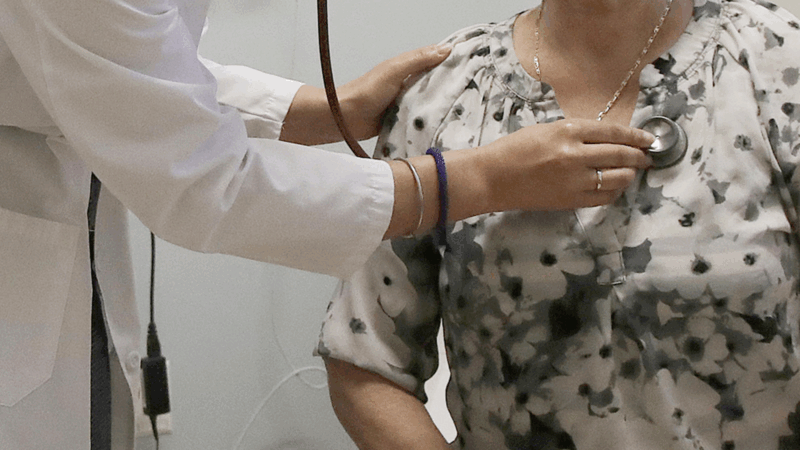Health care costs are soaring. Blame insurers, drug companies — and your employer
The United States has the most expensive health care in the developed world. Now it’s about to get even more expensive.
Some 154 million people get health insurance through their employer — and many could see their paycheck deductions surge next year, by 6% to 7% on average. Some will likely also see their out-of-pocket costs rise as employers pass along the spiking costs of care.
That’s because employers will be paying a lot more — almost 9% more per employee on average, for the same level of coverage — to provide health benefits for their workers. Even after cutting or changing their health care benefits, employers are facing the biggest price increase in 15 years, according to a new survey of more than 1,700 organizations by Mercer, a benefits consultancy.
And 59% of those employers told Mercer they plan to pass those higher prices along to their workers in the form of “cost-cutting changes,” such as higher deductibles, copays or other out-of-pocket costs, such as prices for filling prescriptions.
“It’s almost a perfect storm that’s hitting employers right now,” says Larry Levitt, executive vice president for health policy at KFF, a health policy research nonprofit.
“The price of health care is going up faster than it has in a long time,” he adds. “And typically when an employer is getting a big increase from an insurer, the employer is turning around and trying to pass on some or all of that to its workers.”
The surging health benefit costs come at a time when consumers are still feeling the hangover of pandemic-era record inflation and are generally uneasy about the U.S. economy. Though inflation has cooled considerably in the past two years, prices are starting to tick up again, as many of President Trump’s sweeping taxes on imports go into effect.
These soaring costs also underline a hidden-in-plain-sight truth about the broken U.S. health care system: For the majority of Americans under age 65, their employers ultimately decide how much they pay for health insurance and medical care.
Employers themselves are at the mercy of entities that have even more market power: Drug companies, pharmacy benefit managers, hospitals and others have collectively driven up the costs of accessing medical care in the United States. Health insurers, some owned by gigantic for-profit conglomerates, often draw the blame for the high costs of U.S. health care — as demonstrated by the national outpouring of rage and frustration against UnitedHealth Group, one of the world’s largest companies, after the head of its health insurance business was shot and killed last December.
But when it comes down to determining how much most working Americans pay to stay healthy, the buck stops with employers. And now they’re planning on charging a lot more.
“It’s kind of hidden, because [premium deductions are] coming out of your paycheck and if you’re not paying close attention, it may not be obvious,” Levitt says. “But your take-home pay is going down.”
The good and bad news about why prices are rising
Some of the reasons for the rise in health care prices are actually good news. For example, pharmaceutical companies have developed more effective cancer treatments and weight-loss drugs — which they can also charge more for. And after several years when the COVID-19 pandemic and soaring inflation made many people reluctant to seek non-urgent care, more people are going to the doctor or other providers. But that surge in demand has also led to a surge in prices.
Other reasons have to do with a loss of competition. Some hospitals, doctors’ offices, insurance companies and other businesses within the health care system have merged or consolidated, often allowing the remaining businesses to raise prices for their services.
“What’s missing in health care is: It’s not a traditional free market. You don’t have those competitive forces,” says Sunit Patel, Mercer’s chief actuary for health and benefits in the United States.
This isn’t the first time employers are facing this problem: The costs they pay to provide health care are steep, and those have been rising for years.
Last year, the average U.S. employer spent more than $19,000 per employee to provide family coverage while the employee kicked in $6,000, according to KFF. The total average family premium of $25,572 has increased 52% in the past decade.
Beth Umland, Mercer’s director of health and benefits research, says that employers have tried to avoid passing on all the recent cost increases to employees, in part to try to retain workers during a tight post-pandemic labor market. But after years of elevated costs, she says, “I think just something had to give.”
Employers tend to consider health care benefits as part of the total compensation they pay workers — meaning that if they are spending more on health care, they will probably spend less on traditional salary increases.
And while workers have tried-and-true methods of asking for salary raises, they generally have less opportunity to bargain over the prices their employers set for health care.
“In general for workers, it’s kind of take it or leave it,” Levitt says. “And they really don’t have much of a choice but to take it.”
Former U.S. Sen. Doug Jones announces run for Alabama governor
Jones announced his campaign Monday afternoon, hours after filing campaign paperwork with the Secretary of State's Office. His gubernatorial bid could set up a rematch with U.S. Sen. Tommy Tuberville, the Republican who defeated Jones in 2020 and is now running for governor.
Scorching Saturdays: The rising heat threat inside football stadiums
Excessive heat and more frequent medical incidents in Southern college football stadiums could be a warning sign for universities across the country.
The Gulf States Newsroom is hiring an Audio Editor
The Gulf States Newsroom is hiring an Audio Editor to join our award-winning team covering important regional stories across Mississippi, Alabama and Louisiana.
Judge orders new Alabama Senate map after ruling found racial gerrymandering
U.S. District Judge Anna Manasco, appointed by President Donald Trump during his first term, issued the ruling Monday putting a new court-selected map in place for the 2026 and 2030 elections.
Construction on Meta’s largest data center brings 600% crash spike, chaos to rural Louisiana
An investigation from the Gulf States Newsroom found that trucks contracted to work at the Meta facility are causing delays and dangerous roads in Holly Ridge.
Bessemer City Council approves rezoning for a massive data center, dividing a community
After the Bessemer City Council voted 5-2 to rezone nearly 700 acres of agricultural land for the “hyperscale” server farm, a dissenting council member said city officials who signed non-disclosure agreements weren’t being transparent with citizens.









